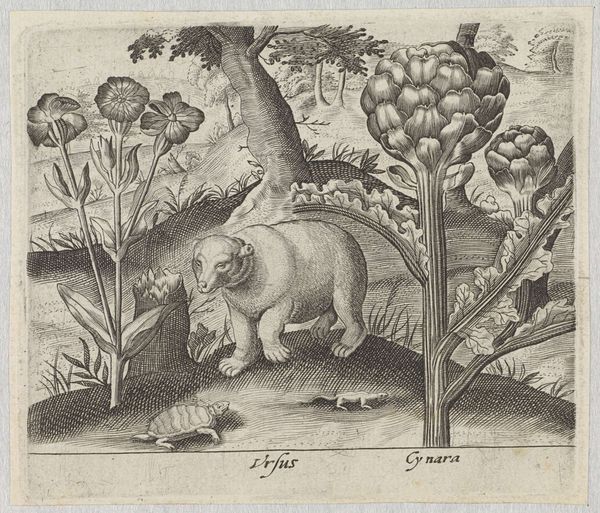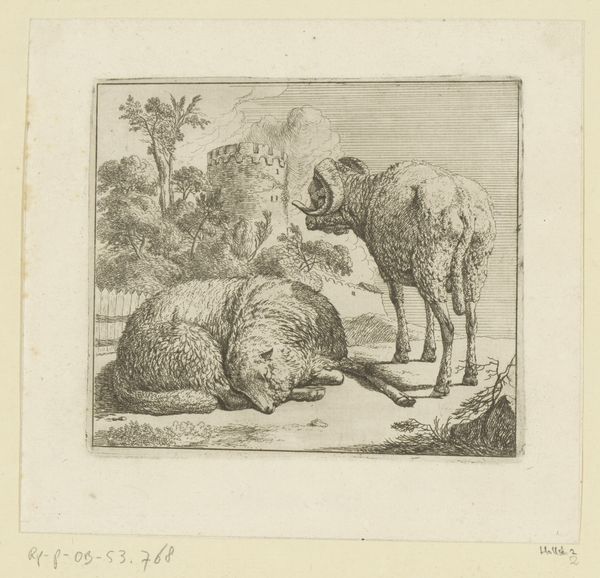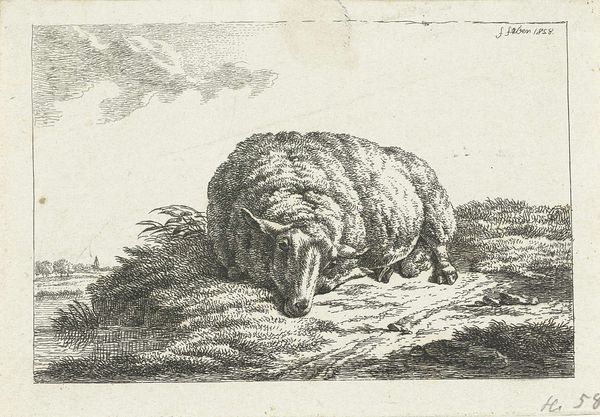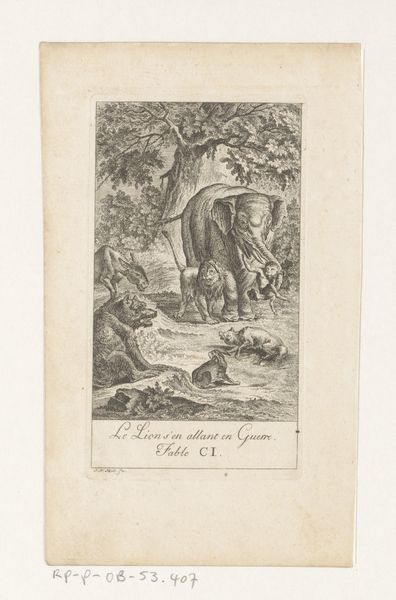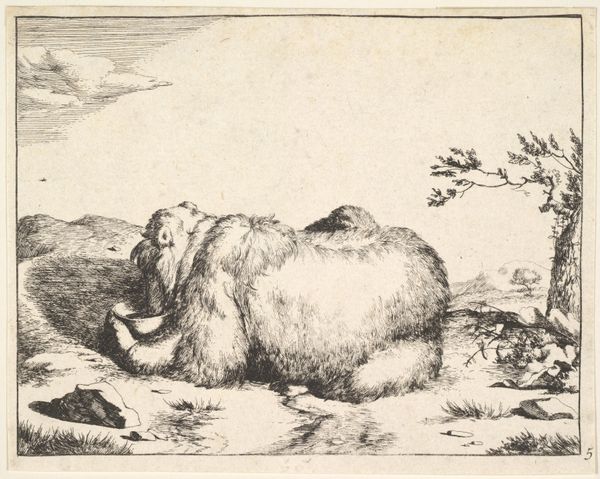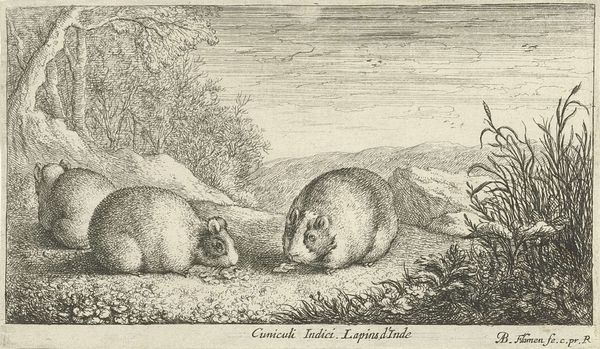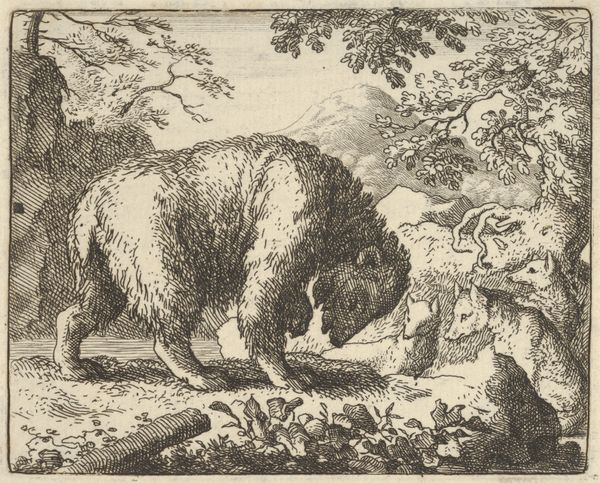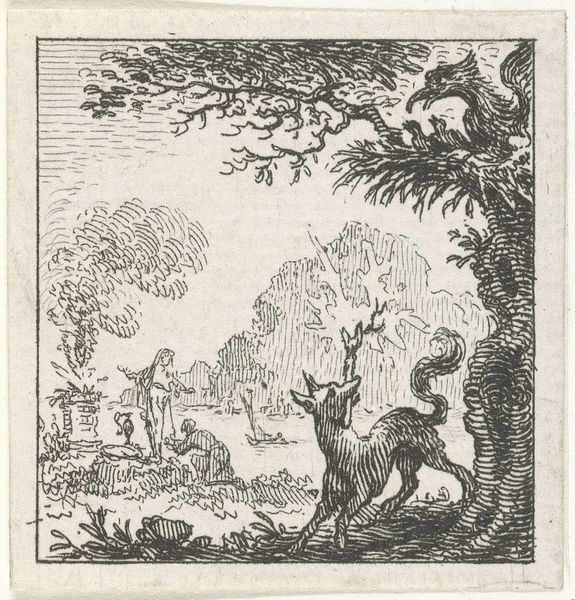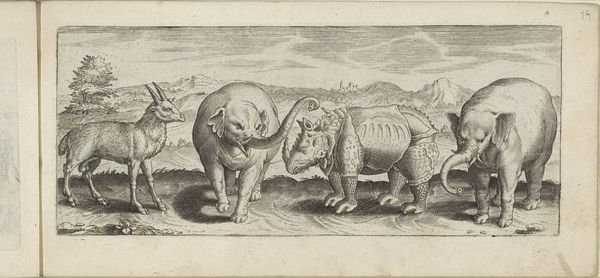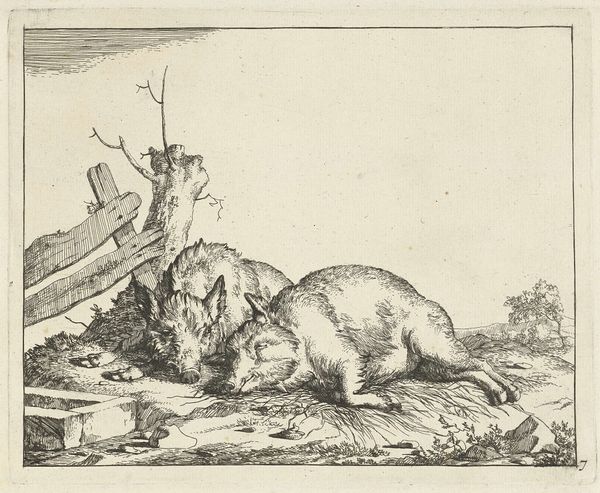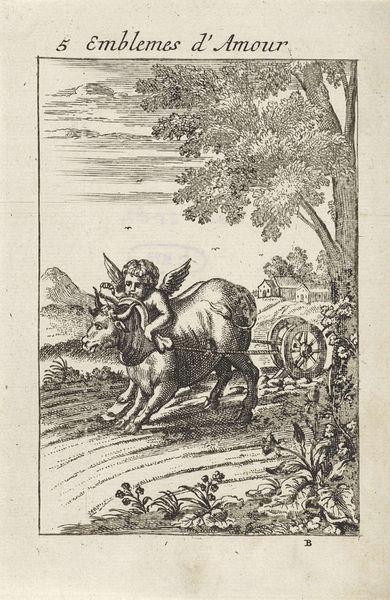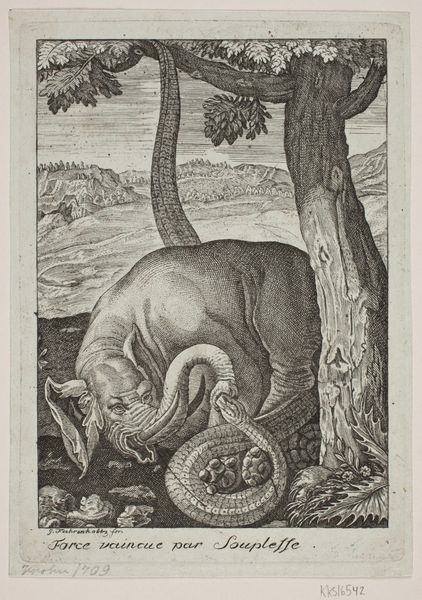
print, etching, engraving
#
narrative-art
#
baroque
# print
#
etching
#
landscape
#
figuration
#
genre-painting
#
engraving
Dimensions: height 86 mm, width 69 mm
Copyright: Rijks Museum: Open Domain
Albert Flamen created this engraving, titled "Das ontsnapt aan wolven," in the 17th century. It's a small work, made with the subtractive process of etching. Consider the labor involved: the artist would have coated a copper plate with wax, then carefully scratched an image into it with a fine needle. Next, the plate would be submerged in acid, which bites into the exposed lines. This painstaking process, when repeated, allows for the creation of multiple prints. Notice how the etched lines define the badger's form, its fur, and the landscape. The quality of the line gives a textural richness. This printmaking technique, while demanding, allowed for the relatively easy distribution of images, contributing to the rise of visual culture and a growing consumer market. The material and process speak to the broader social and economic shifts of the time, where craft skills met the demands of an increasingly commercial world.
Comments
No comments
Be the first to comment and join the conversation on the ultimate creative platform.
